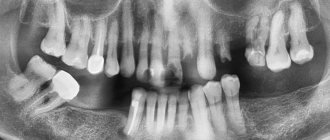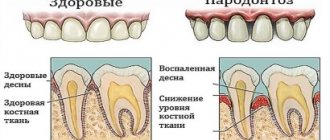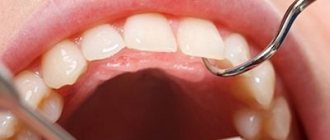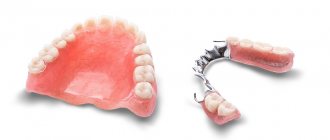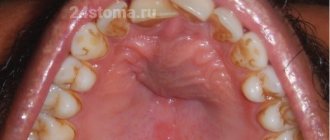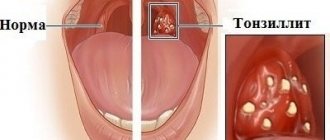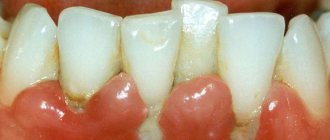Author of the article:
Soldatova Lyudmila Nikolaevna
Candidate of Medical Sciences, Professor of the Department of Clinical Dentistry of the St. Petersburg Medical and Social Institute, Chief Physician of the Alfa-Dent Dental Clinic, St. Petersburg
Inflammation of the gums, or periodontitis, is one of the most common dental diseases. This pathology of the oral cavity can occur due to both chronic diseases and local traumatic injuries.
The main symptom of periodontitis is an acute inflammatory process of gum tissue. Lack of treatment can lead to the development of severe forms of the disease, characterized by tooth loss and displacement.
Prevention and treatment of periodontitis at home
The most effective method of treating almost any disease, including periodontitis, is its prevention. There are simple prevention methods that can be used at home. Their use will prevent the occurrence of periodontitis symptoms and avoid the need for drug and surgical treatment.
The main thing that needs to be done to prevent any pathologies of the oral cavity is to strictly follow the principles of dental hygiene:
- brush your teeth twice a day with therapeutic and prophylactic toothpaste using a medium-hard brush;
- After a meal, remove leftover food using dental floss.
- a rinse with an antibacterial effect, for example, Asepta based on lemon balm, calendula or St. John's wort extract, has a soothing effect on the gums;
- it is necessary to regularly consume solid and plant foods, ensuring sufficient chewing load on the teeth;
- one of the reasons for the development of periodontitis is a lack of vitamins A, C and B vitamins in the diet. To prevent the disease, it is recommended to take a vitamin complex containing a sufficient amount of these vitamins;
- You should visit your dentist twice a year for preventive teeth cleaning. Timely removal of plaque and tartar will help avoid gum inflammation and further development of pathology.
Advantages of treatment with the Vector device
Compared to traditional ultrasonic scalers, the Vector device has the following advantages:
- Due to the fact that the working nozzle makes vertical movements, the possibility of mechanical damage to tooth enamel, root cement or orthopedic structures is eliminated.
- The orderliness of ultrasonic vibrations promotes deeper penetration of ultrasound and better cleaning. A traditional ultrasonic device is capable of treating at a depth of up to 5 mm, while the Vector is capable of treating at a depth of up to 11 mm.
- Ultrasonic energy is supplied to the surface being treated through a hydroshell. This provides a gentle effect on the tissue and eliminates the possibility of overheating the tooth.
- The liquid through which ultrasonic energy is transmitted contains hydroxyapatite particles, which facilitate the process of removing subgingival deposits and polishing the enamel. Hydroxyapatite also stimulates the restoration of periodontal tissue;
- The Vector apparatus does not have self-oscillations or chaotic beatings inherent in conventional scalers, thanks to which the dentist can carry out treatment with a clear sequence.
- Better visibility of the treated areas is provided by six LED lamps on the tip.
- During operation, the Vector does not create an aerosol cloud, like other scalers, which means that there is no risk of infection of medical personnel.
- The availability of tools for primary periodontal therapy makes the dentist’s work easier; vector-06-initial-operation
- Special tools for treating the surface of implants help prevent the development of peri-implantitis.
- A variety of replaceable attachments makes it possible to treat deep periodontal pockets.
- When treated with the device, discomfort in patients is minimized.
- High hygiene, the ability to disinfect any parts of the device.
- Ease of use and effectiveness of treatment reduce the time of the procedure and eliminate the possibility of medical errors.
- The treatment course consists of 1-2 sessions, subsequently only maintenance therapy is needed.
- After treatment, a lasting positive effect develops.
The device is equipped with a large number of attachments, which allows for effective treatment in most clinical cases. Antibacterial safety is ensured by a completely autonomous water capacity and the tightness of the device.
The maximum depth of pocket processing using the vector reaches 11 mm, versus 5 mm for other equipment.
For maintenance therapy, the Vector system is equipped with probes and prophylactic curettes made of flexible plastic and carbon fiber . This significantly reduces the risk of root surface damage or accidental periodontal injury.
It is also important that the device has a built-in function for monitoring the condition of the polished surface and can “distinguish” the roots of the teeth from the formations on them, this allows you to avoid the loss of tooth tissue during the procedure.
Gums are bleeding - contact a periodontist
If you notice the slightest symptoms of periodontitis, immediately go to the doctor. The first sign is regular bleeding of the gums after mechanical impact.
If there is a single bleeding, there is no reason for serious concern: to strengthen the gums, you can change the toothpaste to a special product for the treatment and prevention of periodontitis, or use a strengthening gel or balm. But if bleeding becomes regular, you need to see a specialist.
If the disease progresses, some teeth may need to be removed. Therefore, the earlier the diagnosis is made and treatment is started, the greater the chances of completely getting rid of periodontitis without negative consequences.
Acute and chronic periodontitis: symptoms and treatment
As mentioned, the treatment plan will depend on the severity of the inflammation and how widely it has spread. Periodontitis affecting a few teeth is localized; periodontitis affecting most (or all) teeth is generalized.
Acute periodontitis, which has pronounced symptoms, occurs less frequently than chronic periodontitis and usually affects one or two teeth. It is often caused by trauma to the tooth or periodontal tissue, or improper installation of a crown or filling. This type of disease often occurs aggressively, causing rapid destruction of bone and muscle tissue.
If the pathology is chronic, then phases of exacerbation are replaced by phases of remission. At the same time, chronic periodontitis slowly and steadily progresses from the initial stage to the severe one. This form of pathology can be caused by both local factors (for example, trauma to the oral cavity) and general ones.
Types of periodontitis
Periodontitis is classified based on a number of characteristics. There are two main forms of periodontitis:
- generalized form;
- localized form.
The generalized form of periodontitis is characterized by the spread of the disease to the entire jaw. Very often, generalized periodontitis affects both jaws. Localized periodontitis is characterized by the presence of an inflammatory process within the boundaries of one or two teeth. It does not spread to other teeth in the jaw.
Also, depending on the course of the disease, acute and chronic forms are distinguished. Acute periodontitis is extremely rare, and its peculiarity is the rapid progression and rapid destruction of periodontal tissue. Chronic periodontitis is much more common, and this form occurs with exacerbations and remissions that are classic for chronic diseases.
Professional hygiene for effective treatment of periodontitis
In the vast majority of cases, the development of this disease is associated with insufficient oral hygiene. The periodontal tissues become inflamed due to extensive dental plaque, so the first thing to do to treat periodontitis is a professional cleaning.
This procedure includes the following steps:
- removal of dental plaque
- polishing the tooth surface
- treating the tooth with protective varnish.
Modern cleaning methods are gentle on the enamel and cause minimal discomfort. Also, at the stage of removing tartar and plaque, preparations should begin for the treatment of caries and the removal of hopelessly affected teeth.
Flap surgery for periodontitis
Flap surgery is indicated for patients with pronounced periodontal changes: pocket depths of more than 5 mm, active inflammation, etc. This technique allows not only to eliminate various types of deposits and granulations, but also to restore interdental defects and bone tissue defects. To form a flap, precise cuts are made in a specific direction:
- Horizontal cuts are always made. They can run either inside the gingival sulcus or parallel to the gum edge.
- Vertical incisions allow you to expand the surgical field, but lead to the formation of scar changes in the gums, so they are performed only when necessary.
Among the disadvantages of flap surgery, there is a possibility of flap displacement and exposure of the neck of the tooth. This complication worsens the aesthetics of the oral cavity, contributes to increased tooth sensitivity and the development of tooth root caries.
Drug treatment of periodontitis
The next stage of treatment is to relieve inflammation and eliminate bleeding gums to prevent further development of the disease. This goal is achieved through drug therapy.
Medicines for the treatment of periodontitis are divided into local and general:
- local remedies are used to treat the affected areas. This includes rinses, antiseptic solutions, anti-inflammatory gels and balms. Local treatments also include therapeutic and prophylactic toothpastes, which can be used as an addition to the main therapy;
- general drugs, which are combinations of antibiotics in the form of tablets or intramuscular injections.
Non-invasive treatment for periodontitis may also include physical therapy. Auxiliary procedures using laser or electrophoresis will help eliminate inflammation faster.
How and with what to relieve inflammation
⛔ Only a doctor can prescribe anti-inflammatory therapy. There is no point in trying to heal yourself. If you can't see a dentist right away, here are some effective home remedies to reduce pain and inflammation before you can see a doctor:
- Rinse with salt water. Reduces the number of bacteria, which means it slows down damage to the oral cavity. At least 2 times a day until the swelling subsides.
- Cold compress. Wrap the ice pack in a clean cloth and apply it to the sore area. This will prevent swelling or at least reduce it.
- Herbal poultice. Some herbs and spices can be used as home remedies to relieve inflammation and pain. The analgesic effect is exerted by: clove and spilanthes powder; anti-inflammatory - turmeric. Apply a paste of herbal powder and water to your gums, wait until the pain subsides, and rinse.
- Tea bags. Brew a tea bag in boiling water (5 minutes). Cool, apply the cool bag to the sore gums for at least 5 minutes. Simple black or green tea or anti-inflammatory herbs (chamomile, ginger) are better suited.
- Over-the-counter pain relievers. Regular pain relievers and NSAIDs (non-steroidal anti-inflammatory drugs) such as aspirin, acetaminophen, ibuprofen can help in a pinch. Follow the directions on the bottle labels to determine dosage.
Are folk remedies effective? Dentists do not recommend treating gum disease at home. If an oral infection is suspected, the patient is advised to contact a dentist and immediately visit an emergency dental care office. Painkillers in such cases are unnecessary and ineffective. Home remedies won't help either.
Surgical methods
Treating periodontitis surgically is the most radical method. But in the later stages of the disease, it is necessary to eliminate periodontal pockets and remove non-viable teeth. This can only be done surgically.
The degree of intervention depends on the severity of the pathology. In some cases, a positive result can be achieved by simply depulping the tooth to remove pathogenic bacteria. The procedure for splinting teeth (connecting mobile teeth with adjacent teeth to ensure immobility) and other methods is also used.
A separate stage of surgical treatment is prosthetics. This is done to restore the functionality of the dentition, distribute the chewing load evenly, and prevent displacement and further loss of teeth. In some cases, a temporary prosthesis can be used to quickly unload the chewing surfaces and eliminate mobility during the recovery phase.
Treatment of reimplantitis with the vector device
Reimplantitis is a process that can occur in the dental tissues located next to the implant. Although the implant is not an organic structure, and the tooth is an organic structure, the nature of the occurrence of reimplantitis is similar to the nature of the occurrence of periodontitis.
The main “culprit” of reimplantitis is bacterial plaque, which accumulates on the part of the implant that rises above the bone. Plaque provokes inflammation of the tissues around the implant and can cause its rejection.
The occurrence or non-occurrence of plaque depends on the design of the implant, the volume of the gum, the quality of installation and the individual characteristics of the body. If plaque does occur, it must be removed.
The ultrasonic wave generated by the Vector device perfectly removes plaque, bacteria and biofilms from the surfaces of implants, stopping the development of peri-implantitis and without damaging the implants and superstructures themselves.
The success of periodontal treatment is due, among other things, to regular pocket cleanings and other measures that are repeated at certain intervals. This is especially important during maintenance therapy in the treatment of periodontitis.
Regular cleaning of pockets and removal of bacterial plaque from the roots of teeth or implants turns this procedure into an analogue of professional hygienic cleaning.
Treatment and prevention of periodontitis at home
After successful treatment of periodontitis, it is necessary to pay increased attention to oral hygiene. To do this you should:
- Visit your dentist regularly to remove plaque and tartar;
- eliminate caries and fill dental canals at the slightest manifestation of pathological processes;
- use hygiene products designed to prevent gum disease;
- After each meal, use dental floss and mouthwash with an antiseptic;
- follow other rules for the prevention of periodontitis.
Treatment of periodontal disease using the Vector device
Periodontal disease is a systemic disease of the body , so the dentist performs only his part of the complex treatment.
It is important to correctly diagnose this disease; many patients confuse it with periodontitis due to some similarity of symptoms and may consult a dentist, although the root causes of periodontal disease may be:
- Atherosclerosis;
- Diabetes;
- Vascular diseases;
- Diseases of bone tissue,
- Hypertension,
- Disturbances in the dental system, etc.
The vector apparatus kit is equipped with the necessary attachments for cleaning and polishing the roots of teeth. The procedure itself is generally similar to the procedure for treating periodontal tissue in the treatment of periodontitis.
Asepta Parodontal - specialized products for the treatment of periodontitis
has developed a whole range of drugs for the treatment and prevention of gum disease. It includes:
- Asepta therapeutic and prophylactic toothpaste, which helps eliminate inflammation and bleeding of the gums. Contains a unique complex of medicinal extracts and active ingredients;
- Asepta Sensitive toothpaste for sensitive teeth. Provides gentle care for sensitive enamel and gums prone to inflammatory processes. Thermal mud in the paste helps heal damaged tissue and relieve irritation;
- Asepta mouthwash is intended to relieve symptoms of gingivitis, periodontitis, stomatitis and toothache caused by infection. The antimicrobial components of the drug help relieve inflammation and pain, and also have an antiseptic effect;
- Asepta Fresh mouthwash eliminates inflammation and bleeding of gums, prevents the formation of dental plaque, and also gets rid of pathogenic bacteria that cause bad breath;
- Asepta gel with propolis has an intense anti-inflammatory effect, reducing the sensitivity of enamel and promoting the healing of trophic ulcers. Effectively strengthens periodontal tissues and is suitable for patients of all ages.
- The adhesive balm in this series eliminates the causes and symptoms of inflammatory diseases of the mouth. The sticky base ensures a longer and more effective effect of the drug, allowing it to remain on the gums for a long time;
- Asepta vitamin and mineral complex contains all the necessary substances and active components for healthy teeth and gums.
Take care of your health with professional hygiene products!
Symptoms of periodontitis
Periodontitis is characterized by a number of symptoms, among which the main ones include:
- the appearance of bad breath;
- increased mobility of teeth associated with weakening of their fixation;
- bleeding gums when brushing teeth and eating rough food;
- the appearance of purulent discharge and abscesses on the gums;
- exposure of the roots of the teeth, causing them to visually lengthen.
Very often, people try to treat periodontitis on their own using special herbal decoctions, but we do not recommend doing this. In most cases, self-medication can only lead to unpleasant consequences, and therefore it is best to seek help from a dentist. Effective timely treatment will help you save your teeth and prevent further development of periodontitis. You can make an appointment with a periodontist by calling 8 (495) 033-00-63 or using the online appointment form.
Clinical researches
According to the results of the clinical use of the Asepta line of products: the examined patients, already at the first follow-up examination (after 1-2 days) of using the Asepta line of products, showed a decrease in complaints of discomfort in the gums. On examination, hyperemia and bleeding of the gingival papillae are noted. On the 7th day, complaints of gum bleeding persisted in a minority of patients.
Upon examination, a decrease in hyperemia and swelling of the gums was noted, but bleeding persisted upon probing. On day 14, 2 patients continued to complain of bleeding gums when brushing their teeth; upon examination, a significant decrease in hyperemia and swelling of the gums was noted. After the final application of the gel with propolis, normalization of clinical manifestations was revealed, which is manifested by the absence of bleeding during brushing and probing.
Improved dynamics of indicators allows us to recommend the Asepta line of products for the local treatment of inflammatory periodontal diseases.
Sources:
- Clinical experience in using the Asepta series of products Fuchs Elena Ivanovna Assistant of the Department of Therapeutic and Pediatric Dentistry State Budgetary Educational Institution of Higher Professional Education Ryazan State Medical University named after Academician I.P. Pavlova of the Ministry of Health and Social Development of the Russian Federation (GBOU VPO RyazSMU Ministry of Health and Social Development of Russia)
- The use of adhesive balm "Asepta®" in the treatment of inflammatory periodontal diseases L.Yu. OREKHOVA*, Dr. med. Sciences, Professor, Head of Department V.V. CHPP**, Dr. med. Sciences, Professor, Head of Department S.B. ULITOVSKY*, Dr. med. Sciences, Professor A.A. LEONTIEV*, dentist A.A. DOMORAD**, O.M. YAKOVLEV** SPbSMU named after. acad. I.P. Pavlova, St. Petersburg - *Department of Therapeutic Dentistry, **Department of Microbiology
- The use of new anti-inflammatory drugs in the complex of therapeutic and preventive measures for periodontal diseases (E.D. Kuchumova, A.A. Leontyev, O.V. Kalinina, L.Yu. Orekhova, S.B. Ulitovsky) E.D. Kuchumova, Ph.D., Associate Professor, A.A. Leontyev, dentist, O.V. Kalinina, dentist, L.Yu. Orekhova, Doctor of Medical Sciences, Professor, Head of Department, S.B. Ulitovsky, Doctor of Medical Sciences, Prof. Department of Therapeutic Dentistry of St. Petersburg State Medical University named after. acad. I.P. Pavlova
- Article “Treatment and hygiene features for mild and moderate periodontitis” by S.B. Ulitovsky head Department of PFS, Professor, Doctor of Medical Sciences, A.A. Leontyev Associate Professor of the Department of PFS, Ph.D. PSPbSMU named after. I.P. Pavlova
- Evaluation of the effectiveness of treatment of chronic generalized periodontitis of mild and moderate severity using Asepta antibacterial agents (S.I. Gazhva, A.I. Voronina) S.I. Gazhva, Doctor of Medical Sciences, Prof., Head of Department A.I. Voronina, aspirant, dentist, Department of Dentistry, Faculty of Dentistry, State Educational Institution of Higher Professional Education "Nizhny Novgorod State Medical Academy"
- Study of the clinical effectiveness of treatment and prophylactic agents of the Asepta line in the treatment of inflammatory periodontal diseases (A.I. Grudyanov, I.Yu. Aleksandrovskaya, V.Yu. Korzunina) A.I. GRUDYANOV, Doctor of Medical Sciences, Prof., Head of Department I.Yu. ALEXANDROVSKAYA, Ph.D. V.Yu. KORZUNINA, asp. Department of Periodontology, Central Research Institute of Dentistry and Maxillofacial Surgery, Rosmedtekhnologii, Moscow
Cost of gum treatment with the Vector device
The cost of the procedure depends on the number of teeth being treated. The price list identifies the following areas for teeth (implants): segment, one jaw, oral cavity.
The duration of the procedure depends on the number of teeth being treated and the condition of the periodontium and takes from thirty minutes to two hours.
The greatest contribution to the cost of the procedure is made by: preparation for the procedure - 30 minutes; consumables , polishing fluid ; procedure - 30-120 minutes; instrument sterilization - 30 min. Therefore, the price difference between treating one tooth and the entire oral cavity is only 50%.
Below is the cost of the Vector procedure in Dental World dentistry.
